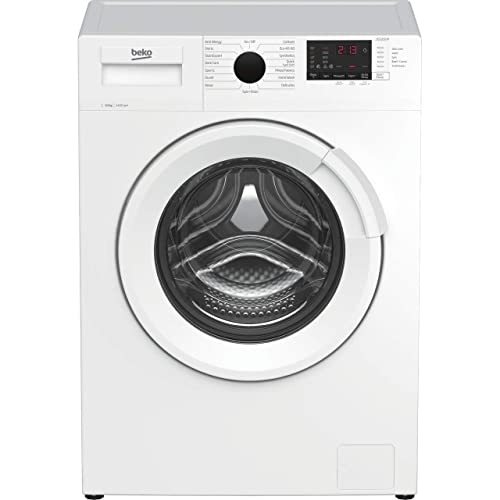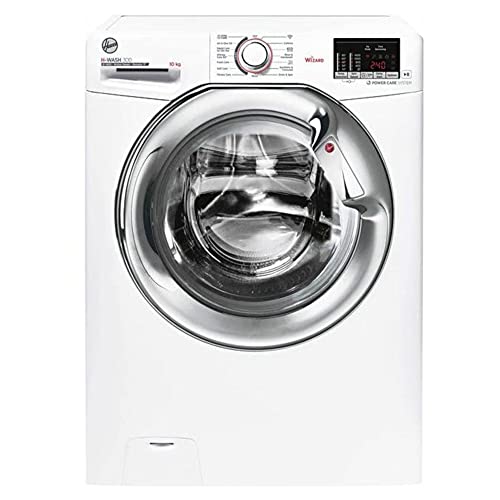20 Inspiring Quotes About 10kg Front Loader
페이지 정보
작성자 Venus 메일보내기 이름으로 검색 작성일24-02-25 23:25 조회8회 댓글0건관련링크
본문
Why Buy a 10kg washers Washing Machine Deals (0522224528.Ussoft.Kr) Front Loader?
The 10kg front loader is perfect for large loads of laundry with plenty of space for large wash cycles as well as 13 wash programs including handwash. With smart tech and advanced features, it's the ideal partner for home laundry.
Front loaders are typically slower to clean, do not come in larger capacities, and can suffer from mould or mildew. They are more water and energy efficient than top-loaders.
Energy
The major energy expense of a front loader of 10kg is electricity to heat water to operating temperature and to run the motor. These costs can be offset by a lower energy consumption when compared to top-loaders. This is due to less power required during the spin cycle and agitation cycles and also using less water. Certain machines have a low-water cycle that uses less water than the cotton cycle. This helps save water and energy.
In general, front-loading washers consume less soap than top-loaders. The drum's tumbling also reduces foamy suds and also reduces overflows, but without affecting the cleaning process. However the door seals and bellows may be more prone to wear than those found in top-loaders. The mechanical agitator in top-loaders also causes significant wear on clothing fabrics. It sways and drops clothes continuously, pushing them to rub against one another. This abrasion is measured by the amount fabric that accumulates on the clothes dryer's lint screen, as lint is mostly composed of stray fibers removed from clothing while washing and drying. Many top-loaders have been designed to run at slower speeds and may include the "freshening cycle" to clean the bellows or mechanical gears frequently.
Water
Top-load washers require an agitator or impeller to force water and detergent through clothing, causing mechanical wear and abrasion. In contrast, 10Kg washing Machine Deals front-loaders employ paddles that gently lift and drop clothes inside a drum spinning to clean, reducing wear. The amount of lint that is in the dryer lint filter can be used to estimate the rate of wear. Lint is made mainly up of stray threads which are removed from clothes while washing and drying.
Front-loading machines are less prone to leak since they have lower levels of water than top-loaders. Front-loaders require a bellows or seal to stop water from leaking through the door. These systems aren't maintained as often as top-loaders.
 Additionally, front-loaders are able to operate with hot or cold water and a lot of them without the need for an external heating source, which makes them more energy efficient than most top-loaders. This efficiency could reduce operating costs for the same laundry load, especially in locations where water, energy, and detergent are expensive.
Additionally, front-loaders are able to operate with hot or cold water and a lot of them without the need for an external heating source, which makes them more energy efficient than most top-loaders. This efficiency could reduce operating costs for the same laundry load, especially in locations where water, energy, and detergent are expensive.
The 10kg front loader is perfect for large loads of laundry with plenty of space for large wash cycles as well as 13 wash programs including handwash. With smart tech and advanced features, it's the ideal partner for home laundry.
Front loaders are typically slower to clean, do not come in larger capacities, and can suffer from mould or mildew. They are more water and energy efficient than top-loaders.
Energy
The major energy expense of a front loader of 10kg is electricity to heat water to operating temperature and to run the motor. These costs can be offset by a lower energy consumption when compared to top-loaders. This is due to less power required during the spin cycle and agitation cycles and also using less water. Certain machines have a low-water cycle that uses less water than the cotton cycle. This helps save water and energy.
In general, front-loading washers consume less soap than top-loaders. The drum's tumbling also reduces foamy suds and also reduces overflows, but without affecting the cleaning process. However the door seals and bellows may be more prone to wear than those found in top-loaders. The mechanical agitator in top-loaders also causes significant wear on clothing fabrics. It sways and drops clothes continuously, pushing them to rub against one another. This abrasion is measured by the amount fabric that accumulates on the clothes dryer's lint screen, as lint is mostly composed of stray fibers removed from clothing while washing and drying. Many top-loaders have been designed to run at slower speeds and may include the "freshening cycle" to clean the bellows or mechanical gears frequently.
Water
Top-load washers require an agitator or impeller to force water and detergent through clothing, causing mechanical wear and abrasion. In contrast, 10Kg washing Machine Deals front-loaders employ paddles that gently lift and drop clothes inside a drum spinning to clean, reducing wear. The amount of lint that is in the dryer lint filter can be used to estimate the rate of wear. Lint is made mainly up of stray threads which are removed from clothes while washing and drying.
Front-loading machines are less prone to leak since they have lower levels of water than top-loaders. Front-loaders require a bellows or seal to stop water from leaking through the door. These systems aren't maintained as often as top-loaders.
 Additionally, front-loaders are able to operate with hot or cold water and a lot of them without the need for an external heating source, which makes them more energy efficient than most top-loaders. This efficiency could reduce operating costs for the same laundry load, especially in locations where water, energy, and detergent are expensive.
Additionally, front-loaders are able to operate with hot or cold water and a lot of them without the need for an external heating source, which makes them more energy efficient than most top-loaders. This efficiency could reduce operating costs for the same laundry load, especially in locations where water, energy, and detergent are expensive.
댓글목록
등록된 댓글이 없습니다.

